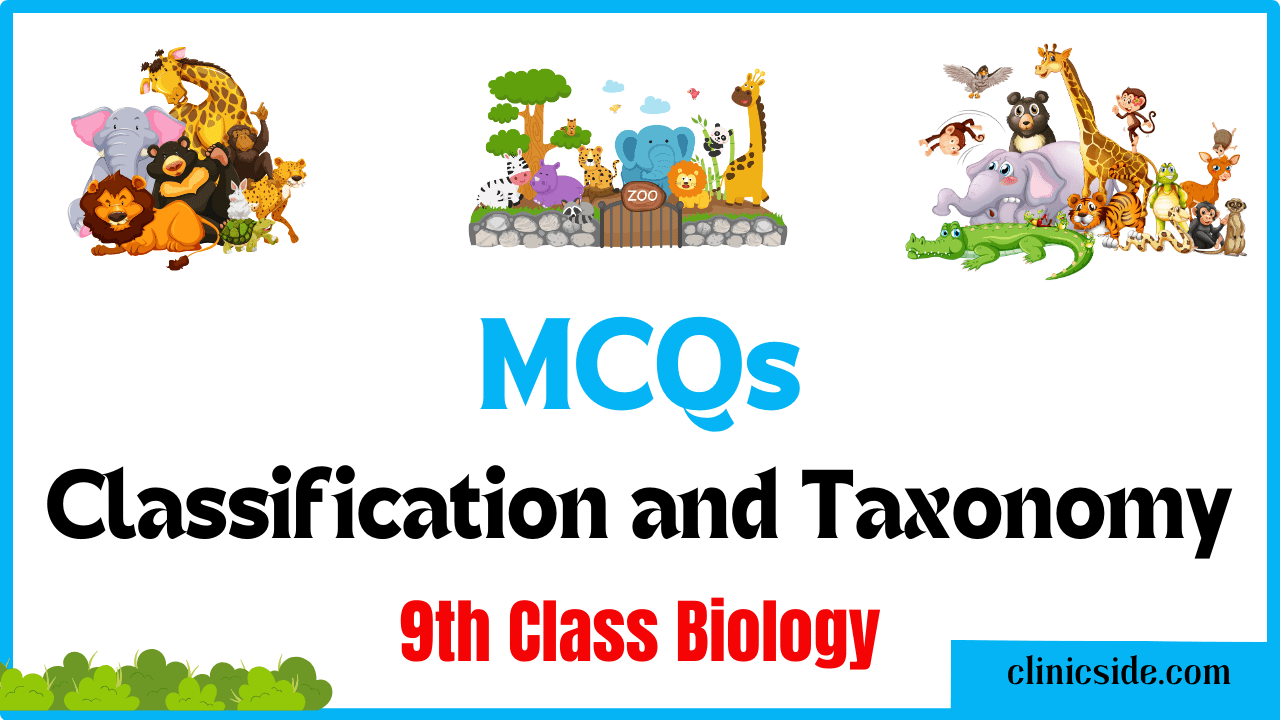Quiz
Available options: 1 to 26
Pre-Quiz Discussion On Classification and Taxonomy:
Classification and Taxonomy, which is the science of organizing and categorizing living organisms based on their shared characteristics and evolutionary relationships. This field of study helps us make sense of the incredible diversity of life on Earth. Let’s delve into the essential concepts:
What is Classification?
Definition: Classification is the process of grouping organisms into hierarchical categories based on their shared characteristics and evolutionary history.
Purpose: It helps us organize and understand the vast array of living organisms, making it easier to study and communicate about them.
Taxonomic Hierarchy:
Levels of Classification: Living organisms are classified into a hierarchical system that includes several levels, from the broadest to the most specific. The main taxonomic ranks, in descending order, are Kingdom, Phylum, Class, Order, Family, Genus, and Species.
Binomial Nomenclature:
Definition: Binomial nomenclature is the system of giving each species a unique two-part scientific name.
Format: The name consists of the genus (with a capital initial letter) and the species (in lowercase). For example, humans are Homo sapiens.
The Importance of Taxonomy:
Understanding Diversity: Taxonomy provides a systematic way to understand and appreciate the incredible diversity of life.
Scientific Communication: It offers a universal language for scientists to discuss and study organisms, regardless of their native languages.
The Work of Carl Linnaeus:
Historical Context: Carl Linnaeus, an 18th-century Swedish botanist, is often regarded as the father of modern taxonomy.
Linnaean System: He developed the Linnaean system of classification, which remains the basis for much of today’s taxonomy.
Domains and Kingdoms:
Three Domains: Modern taxonomy classifies life into three domains: Bacteria, Archaea, and Eukarya.
Kingdoms: Within the domain Eukarya, organisms are further divided into various kingdoms, such as Animalia, Plantae, Fungi, and more.
Phylogenetics:
Definition: Phylogenetics is the study of the evolutionary relationships between species based on genetic, anatomical, and fossil evidence.
Phylogenetic Trees: Scientists use phylogenetic trees to depict the evolutionary history of species.
Challenges and Changes:
Reclassification: As our understanding of genetics and evolutionary relationships evolves, some organisms may be reclassified.
New Discoveries: Ongoing research and new discoveries continually influence how we classify and understand life.
Conservation and Biodiversity:
Impact of Classification: Accurate classification aids in the identification of endangered species and the development of conservation strategies.
Biodiversity Conservation: Understanding the relationships between species is vital for preserving Earth’s biodiversity.
Taxonomy involves hierarchical ranks, starting with domains as the highest level, followed by kingdoms, phyla, classes, orders, families, genera, and finally, species. Each rank represents a progressively more specific level of classification within the biological world. This system of categorization through taxonomy helps scientists understand the relationships between different organisms and provides a framework for studying the diversity of life on Earth.
Domain:
Definition: Domains are the highest, most inclusive taxonomic ranks used to categorize life on Earth.
Explanation: There are three primary domains: Bacteria (prokaryotes), Archaea (another group of prokaryotes), and Eukarya (organisms with a true nucleus and membrane-bound organelles). Domains are a relatively recent addition to taxonomy and offer a fundamental way to divide life based on cellular structure.
Kingdom:
Definition: Kingdoms are the second-highest level of classification and are found within each domain.
Explanation: Organisms within a domain are grouped into various kingdoms. For example, within the domain Eukarya, there are kingdoms such as Animalia (animals), Plantae (plants), Fungi (fungi), and more. Kingdoms help narrow down the classification of organisms into major groups based on broad characteristics.
Phylum:
Definition: Phylum is a taxonomic rank that is below kingdom and above class.
Explanation: Phylum groups organisms with similar body plans or structural characteristics. Within a kingdom, organisms are classified into different phyla based on specific structural features.
Class:
Definition: Class is a rank below phylum and above order.
Explanation: Classes divide organisms into smaller groups within a phylum based on shared characteristics. For example, within the phylum Chordata, you find classes like Mammalia (mammals), Aves (birds), and Reptilia (reptiles).
Order:
Definition: Order is a taxonomic rank below class and above family.
Explanation: Orders group organisms with even more specific similarities. For instance, within the class Mammalia, you have orders like Carnivora (carnivores) and Rodentia (rodents).
Family:
Definition: Family is a rank below order and above genus.
Explanation: Families are smaller groups within orders. They further classify organisms based on shared characteristics and are often recognizable based on common features.
Genus:
Definition: Genus is a taxonomic rank below family and above species.
Explanation: The genus groups species that are closely related and share many characteristics. Organisms within the same genus have a common ancestor and often resemble each other closely.
Species:
Definition: Species is the most specific and lowest taxonomic rank.
Explanation: A species consists of individuals that can interbreed and produce fertile offspring. They share the most common characteristics and are the fundamental units of biological classification. The scientific name of an organism consists of the genus name and the species name.
Test Guidelines and Time Limit:
Guidelines for Maximizing Your Quiz Experience:
Read and Understand:
Carefully read each question related to Classification and Taxonomy and ensure you have a clear understanding of the concepts before selecting your answer. This will help you make informed choices and avoid misconceptions.
Choose the Best Answer:
Evaluate all available options before selecting the one that aligns best with your knowledge of Classification and Taxonomy. Strive for accuracy and relevance in your responses.
Time Management:
The quiz has a time limit based on the number of questions you choose. Allocate 45 seconds per question. Manage your time wisely to complete all questions within the allotted time.
Efficient time management increases your likelihood of successfully completing the quiz and submitting your answers within the designated timeframe. Best of luck!






